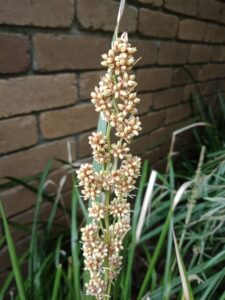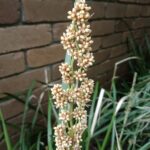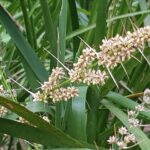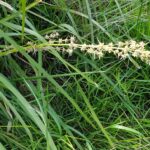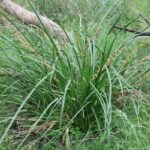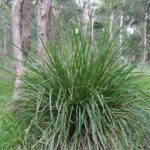Gardening with Indigenous Plants
Indigenous Plant Use
Identification & Control of Common Weeds
| Botanical Name: | Lomandra longifolia synonym: Xerotes longifolia |
| Common Name: | basket grass, karawun, spiny-headed mat-rush, spiny-head mat-rush |
| Sold As: | Tube ($2.00) |
| Plant Type(s): | Rush / Sedge, Grass Like / Strappy, Butterfly Attracting, Insect Attracting, Popular (home), Popular (bulk), Indigenous Plant Use |
| Indigenous Plant Use: | Young white leaves can be chewed to release starch. The leaves were used to make strong nets and baskets.CAUTION: Many plants are poisonous if not collected and prepared properly! |
| Growing Conditions: | Full Sun, Partial Shade, Shade
Dry, Moist, Well Drained |
| Size (HxW): | 0.5-1 m x 0.5-1.2 m |
| Foliage: | Bright green, firm and smooth strap-like leaves up to 1m long x 12mm wide |
| Flowers: | Yellowish scented flowers in clusters on branches along a flattened stem, with spiky bracts 3cm long at the base of each flower cluster. Green shiny brown-orange capsules remain for most of the year. Flowers from September to December. Male and female flowers on separate plants. |
| General Comments: | Large dense tussock plant. A versatile and hardy landscaping plant, ideal for planting in clusters or in large drifts. Good for stabilising river and creek banks. Grows well beneath established trees. Highly drought and frost tolerant. Moisture soil is required for growth of the plant, but it would not die out without watering. It is very high tolerant to dryness and does not have pest and disease. The heavy-smelling nectar on flowers can attract pollinating beetles. Food plant for caterpillars. |
 Further Information: | |
| Similar Plant(s): | Dianella longifolia var. longifolia |
| Plant Propagation: | Propagates by seed or clump division. When the fruits are matured and turn brown, sow the seed in moist soil for 6 weeks in the greenhouse/outdoor. Clump division: by dividing the plant into half and plant them in moist soil indoor/outdoor. |

